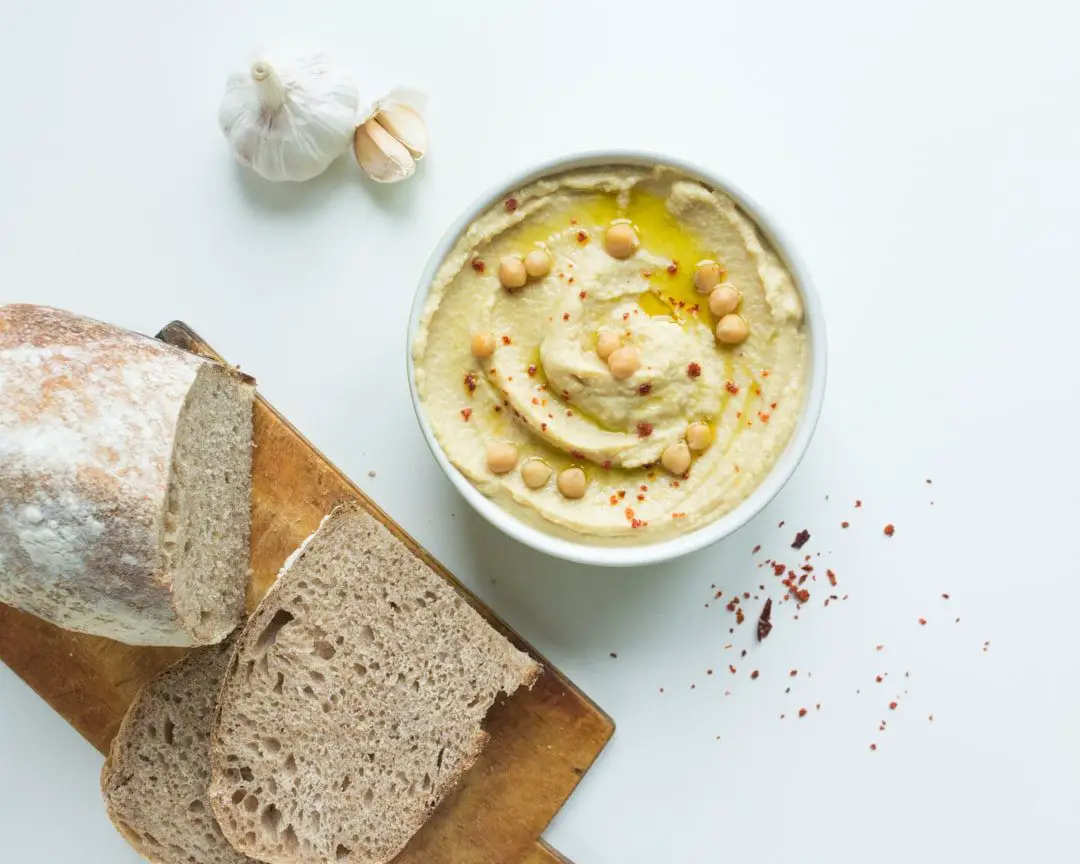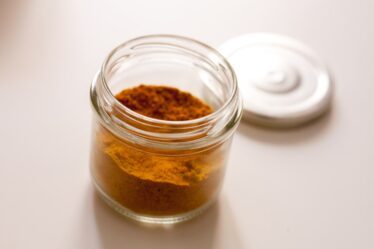
Italian cuisine is renowned worldwide for its rich flavors and diverse ingredients. From pasta dishes to pizza, Italian food has become a staple in many households. One of the key elements that sets Italian cuisine apart is its use of spices. Spices play a crucial role in enhancing the flavors of Italian dishes, adding depth and complexity to each bite.
Key Takeaways
- Italian cuisine is known for its use of spices to enhance flavors and create bold, unique dishes.
- Spices play a crucial role in Italian cooking, adding depth and complexity to dishes.
- Essential spices in Italian cuisine include oregano, garlic, saffron, cinnamon, basil, capers, and anchovies.
- Oregano is a versatile spice that can be used in a variety of Italian dishes, from pizza to pasta sauces.
- Garlic is a bold and flavorful spice that is a staple in many Italian dishes, adding depth and complexity to sauces and meats.
Understanding the role of spices in Italian cooking
Spices are an integral part of Italian cooking, as they bring out the natural flavors of the ingredients used in each dish. They are used to enhance the taste and aroma of various ingredients, creating a harmonious balance of flavors. Whether it’s a pinch of oregano in a tomato sauce or a sprinkle of cinnamon in a dessert, spices add that extra layer of deliciousness to Italian dishes.
In Italian cuisine, the balance of flavors is key. Each spice is carefully chosen to complement the other ingredients in a dish, creating a harmonious blend of tastes. The use of spices is not meant to overpower the dish, but rather to enhance and elevate the natural flavors. This delicate balance is what makes Italian cuisine so unique and enjoyable.
Essential spices in Italian cuisine: an overview
There are several common spices used in Italian cooking that are considered essential for authentic flavor profiles. Some of these include oregano, garlic, saffron, cinnamon, basil, capers, and anchovies.
Oregano is one of the most commonly used spices in Italian cuisine. It adds a distinct earthy and slightly bitter flavor to dishes such as pasta sauces, pizzas, and grilled meats. Oregano can be used both dried and fresh, with each form offering its own unique taste.
Garlic is another staple spice in Italian cooking. It is used in various forms, including fresh cloves, minced garlic, or garlic powder. Garlic adds a pungent and slightly sweet flavor to dishes, and it is often used as a base for sauces, soups, and marinades.
Saffron is a prized spice in Italian cuisine, known for its vibrant color and unique taste. It is used sparingly due to its high cost, but even a small amount can add a rich and aromatic flavor to dishes such as risotto, pasta, and seafood.
Cinnamon is commonly associated with desserts, but it also has a place in Italian cuisine. It adds warmth and sweetness to dishes like cannoli, tiramisu, and apple strudel. Cinnamon can be used in both ground form or as a whole stick for infusing flavors.
Basil is an essential herb in Italian cooking, often used in dishes like pasta sauces, pesto, and salads. It has a sweet and slightly peppery flavor that adds freshness to any dish. Basil can be used fresh or dried, with each form offering its own distinct taste.
Capers are small flower buds that add a tangy and slightly salty flavor to Italian sauces and dressings. They are often used in dishes like pasta puttanesca, chicken piccata, and caprese salad. Capers can be used both whole or chopped, depending on the desired intensity of flavor.
Anchovies are small fish that are packed with umami flavor. They are often used in Italian cooking to add depth and complexity to dishes like pasta sauces, pizzas, and salads. Anchovies can be used whole or mashed into a paste for easy incorporation into recipes.
The versatility of oregano in Italian cooking
| Recipe | Amount of oregano used | Benefits of oregano |
|---|---|---|
| Pizza Margherita | 1 tsp | Antibacterial properties, aids digestion |
| Spaghetti Bolognese | 2 tsp | Anti-inflammatory properties, rich in antioxidants |
| Bruschetta | 1 tbsp | May help lower cholesterol, contains vitamins A, C, and K |
| Minestrone Soup | 1 tsp | May help boost immune system, contains iron and calcium |
Oregano is an herb that is native to the Mediterranean region and has been used in Italian cuisine for centuries. It is known for its strong aroma and distinct flavor profile. Oregano can be used in various forms, including dried leaves, fresh leaves, or as an essential oil.
In Italian cooking, oregano is most commonly used in tomato-based dishes such as pasta sauces, pizzas, and bruschetta. It adds a robust and slightly bitter flavor that complements the acidity of the tomatoes. Oregano can also be used to season grilled meats, roasted vegetables, and soups.
Another popular way to use oregano is in herb blends, such as Italian seasoning. This blend typically includes oregano, basil, thyme, rosemary, and marjoram. It can be used as a rub for meats, a seasoning for roasted vegetables, or a flavor enhancer for soups and stews.
Fresh oregano leaves can be used as a garnish for salads or added to marinades for an extra burst of flavor. Oregano essential oil can be used sparingly to add a concentrated oregano flavor to dishes.
The bold flavors of garlic in Italian cuisine
Garlic is a staple ingredient in Italian cuisine and is used in a variety of dishes. It has a pungent and slightly sweet flavor that adds depth and complexity to recipes. Garlic can be used in various forms, including fresh cloves, minced garlic, or garlic powder.
In Italian cooking, garlic is often used as a base for sauces, soups, and marinades. It is typically sautéed in olive oil until fragrant before adding other ingredients. This process helps to release the natural oils and flavors of the garlic, creating a rich and aromatic base for the dish.
Garlic can also be used raw in dishes like bruschetta or salad dressings. When raw, garlic has a stronger and more intense flavor. It is important to use it sparingly to avoid overpowering the other ingredients.
Garlic powder is a convenient option for adding garlic flavor to dishes without the need for peeling and chopping fresh cloves. It can be sprinkled on roasted vegetables, pasta dishes, or used as a seasoning for meats.
The unique taste of saffron in Italian dishes

Saffron is a highly prized spice in Italian cuisine, known for its vibrant color and unique taste. It is derived from the dried stigmas of the Crocus sativus flower and has a distinct floral and slightly bitter flavor.
In Italian cooking, saffron is often used in dishes such as risotto, pasta, and seafood. It adds a rich and aromatic flavor that elevates the taste of the dish. Saffron is typically soaked in warm water or broth before being added to the recipe to release its flavors and color.
One of the most famous Italian dishes that uses saffron is risotto alla Milanese. This creamy rice dish is flavored with saffron, giving it a beautiful golden hue and a delicate taste. Saffron can also be used in pasta sauces, soups, and even desserts like saffron-infused panna cotta.
Due to its high cost, saffron is often used sparingly in recipes. A little goes a long way, and it is important to use it judiciously to avoid overpowering the other flavors in the dish.
The warmth of cinnamon in Italian desserts
Cinnamon is a spice that is commonly associated with desserts, but it also has a place in Italian cuisine. It adds warmth and sweetness to dishes like cannoli, tiramisu, and apple strudel.
In Italian desserts, cinnamon can be used in both ground form or as a whole stick for infusing flavors. Ground cinnamon can be added directly to batters or doughs for an even distribution of flavor. Cinnamon sticks can be simmered in liquids like milk or syrup to infuse their aroma and taste.
Cinnamon is often paired with other spices like nutmeg and cloves to create a complex flavor profile. This combination of spices adds depth and warmth to desserts, making them even more delicious.
The aromatic quality of basil in Italian cooking
Basil is an herb that is widely used in Italian cuisine, known for its aromatic and slightly peppery flavor. It is often used in dishes like pasta sauces, pesto, and salads.
In Italian cooking, basil is typically used fresh, as it has a more vibrant flavor compared to dried basil. It can be added to sauces, soups, and stews towards the end of cooking to preserve its aroma and taste.
One of the most famous Italian dishes that uses basil is Caprese salad. This simple salad combines fresh tomatoes, mozzarella cheese, and basil leaves, drizzled with olive oil and balsamic vinegar. The combination of flavors creates a refreshing and delicious dish.
Basil can also be used to make pesto, a sauce made from blending basil leaves, garlic, pine nuts, Parmesan cheese, and olive oil. Pesto can be used as a sauce for pasta, a spread for sandwiches, or a topping for grilled meats.
The tangy flavor of capers in Italian sauces
Capers are small flower buds that add a tangy and slightly salty flavor to Italian sauces and dressings. They are often used in dishes like pasta puttanesca, chicken piccata, and caprese salad.
In Italian cooking, capers can be used both whole or chopped, depending on the desired intensity of flavor. Whole capers can be added to sauces or dressings for bursts of tanginess. Chopped capers can be mixed into pasta dishes or sprinkled on top of salads for added texture and taste.
Capers are typically preserved in brine or salt to enhance their flavor and extend their shelf life. Before using capers in recipes, it is important to rinse them thoroughly to remove any excess salt or brine.
The pungent taste of anchovies in Italian dishes
Anchovies are small fish that are packed with umami flavor. They are often used in Italian cooking to add depth and complexity to dishes like pasta sauces, pizzas, and salads.
In Italian cuisine, anchovies can be used whole or mashed into a paste for easy incorporation into recipes. Whole anchovies can be added to sauces or dressings for a burst of salty and savory flavor. Anchovy paste can be mixed into pasta sauces, spread on pizza dough, or used as a seasoning for roasted vegetables.
Anchovies are also commonly used in Caesar salad dressing, adding a distinct tanginess and richness to the dressing. They can be mashed into the dressing or used as a garnish on top of the salad.
Spices play a crucial role in Italian cuisine, enhancing the flavors of dishes and creating a harmonious balance of tastes. From oregano to garlic, saffron to cinnamon, each spice brings its own unique flavor profile to Italian dishes. Whether it’s adding depth to a tomato sauce or infusing warmth into a dessert, spices are an essential component of Italian cooking.
As you explore the world of Italian cuisine, don’t be afraid to experiment with different spices. Try adding a pinch of oregano to your pasta sauce or a sprinkle of cinnamon to your tiramisu. The possibilities are endless, and you may discover new flavor combinations that will elevate your cooking to new heights. So go ahead, embrace the flavors of Italy and let spices be your guide on a culinary journey like no other.
If you’re a fan of Italian cuisine and love experimenting with different flavors, you’ll definitely want to check out this article on Italian spice ingredients. It explores the rich and diverse world of spices used in traditional Italian dishes, from aromatic herbs like basil and oregano to fiery red pepper flakes. Discover how these ingredients can elevate your cooking and transport your taste buds to the heart of Italy. To learn more, click here: Italian Spice Ingredients.



